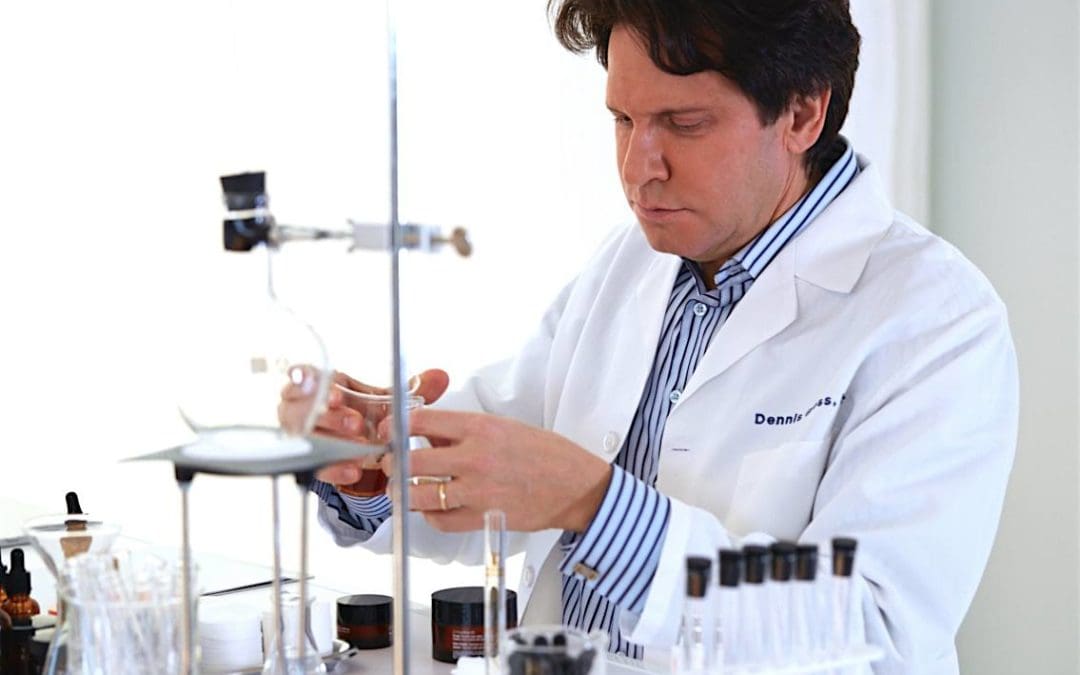In my experience as a dermatologist and chemist, no matter how good an ingredient may be, there’s always a way to make it even better. One of the most effective ways to supercharge a skincare product is by combining skincare ingredients in a single formula. When you mix two great things, you get something that’s even better. It takes two to tango, after all.
Mix your way to perfect skin by combining complementary skincare ingredients
Cocktailing ingredient combinations taps into the chemistry that fuels a stellar ingredient to become even more powerful. Recognizing there’s no single magic bullet ingredient—something that supposedly does it all—is the crucial concept to creating formulas that work better and target multiple issues.
Do you ever wonder how ingredients work? An easy way to understand them is to think of your skin like a lock and key. Your skin has millions of “locks,” which are different receptors for ingredients that act like “keys.” When you apply an ingredient, those “keys” insert into the skin’s receptor “locks” to activate the skin cell and fix your issue. But just as every key does not work on every lock, every ingredient doesn’t work for every issue. You need more than one ingredient to completely treat your skin concern—whether its wrinkles, dry skin, dullness, breakouts or dark spots.
Here are my four all-star skincare ingredients, what they do, and how they create a power couple when combined with other effective ingredients.
Retinol
Giving radiance that Cleopatra would adore, retinol is the gold standard for anti-aging. Derived from Vitamin A, it works on the surface layer of the skin, improving the look of wrinkles, smoothing texture and fading uneven discoloration. However, it can be drying and irritating, especially at high concentrations. Rather than compromising effectiveness, I researched the entire world of dermatology for the perfect partner for retinol.
The answer is ferulic acid, a plant-based ingredient. This antioxidant has a tremendous soothing quality that negates any side effect retinol may have. Plus, ferulic acid consumes evil free radicals that enter our skin and destroy our natural collagen, causing lines, wrinkles and laxity. So, if retinol is like Cleopatra, then ferulic acid is her Mark Antony—a beauty power couple indeed.
Vitamin C
Almost like Hercules, vitamin C conquers the major causes of aging skin. It increases the firming collagen fibers in the skin by directly stimulating its production, and it prevents our collagen fibers from breaking down. Vitamin C also fades sun discoloration. It’s a fantastically effective ingredient. However, it takes lots of energy for the skin to optimally respond to the Herculean power of vitamin C. Our skin gets lazy and fatigued, which is why it often gets that tired look.
So, I created what I call the Energy Complex—a mix of CoQ10, niacinamide and carnitine—for my vitamin C products. It recharges exhausted skin’s battery-like mitochondria. This re-energizing of the skin wakes it up, reversing that tired look and stimulating it with vitamin C to give faster results. This power couple is like Hercules assisted by the Energizer Bunny.
Hyaluronic Acid
In terms of moisturizing ingredients, hyaluronic acid is in a league of its own. It’s a molecule found in the skin that can hold 1,000 times its weight in water and plumps the skin from within. However, as we age, we lose hyaluronic acid and our skin naturally gets drier, less plump and less dewy. So this ingredient is crucial to any moisturizer because it produces more water within the skin.
However, dry skin is also caused by water loss via evaporation from the skin. It’s not only a matter of internal hydration. Our skin surface can “leak” moisture because we lose the natural oils and a precious ingredient called ceramide that makes up our skin barrier. You need both hyaluronic acid and ceramide. They are the ying and the yang of a complete moisturizer.
Glycolic Acid
Exfoliation is essential to looking fresh day to day, which is why I’m huge advocate of facial peels. People think of aging happening yearly, but it happens daily. Each day our skin produces a layer of dead skin that builds up on the surface. That dead skin is our oldest layer. As it accumulates, the skin loses radiance and begins to look dull. An exfoliating ingredient like glycolic acid is the fastest way to overhaul your skin—it dissolves and dislodges dead skin, revealing the fresh, healthy skin that lies beneath. However, many fear peels because they can be drying and irritating.
The key to a safe and effective peel is to combine glycolic with a blend of other alpha-hydroxy acids like lactic, malic, citric and beta-hydroxy salicylic acid. Rather than using a high concentration of glycolic on its own, combining a lower percentage of glycolic with other low dose acids helps detach those dead skin cells more gently and effectively. Proper exfoliation also allows for greater penetration of other anti-aging ingredients. So, when it comes to exfoliation and peels, it’s more than just a power couple. It takes a village.
Ingredient cocktailing is one of the most effective ways to make your ingredients work harder and better for you. These skin partners make good skincare ingredients great, proving that two really is better than one.


Recent Comments